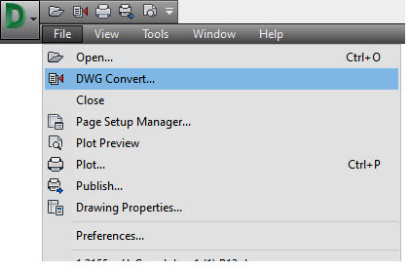How to import a DWG with External references (Xrefs)
When you import a DWG that contains XREFS, you can save these as subdocuments. During the import of the DWG the XREFS are automatically recognised by Pythagoras.
- Save your main document
- File > Import > DXF/DWG

By clicking on 'Yes' the XREFS will be imported, one by one, and saved as a subdocument. If there is a preexisting subdocument in you file, you'll get a notification with the option to overwrite it or to ignore this particular XREF. You can also choose 'No to All' or 'Yes to All'.

The result in the Subdocument Manager will look like this:


It is of course also possible to make a DXF / DWG Export. Make sure your main drawing is active. If you want to add the XREFS to the export, make sure to check the following box:

FOR RELEASES PREDATING 2024
How to import a DWG with External references (Xrefs)
If you have a DWG file that contains Xrefs, Pythagoras will not automatically convert the main document and all the reference documents into Pythagoras files.
You have two options to open these types of DWG files:
Option 1: Convert the DWG using DWG TrueView
In the menu, choose: File DWG Convert… :

Select the file that needs to be converted:

Press the button ‘Conversion Setups…’
Here, you will see several conversion options:

Select a folder where you want to store the new DWG. It is important not to override the original file.
Make a selection of actions to perfom while converting the file:
- Check and fix errors
- Set default plotter to ‘none’
- Bind external references: Bind or Insert
- Purge drawings
- …
If you have a file that contains Xrefs, it is important that you choose: Bind external references - Insert.
The DWG, which has been converted, can now be imported into Pythagoras. The objects of all the DWG-Xrefs are now included in the drawing.
Option 2: Convert and load each file individually into Pythagoras as a subdocument
Open each Xref-DWG file separately in Pythagoras and save as a Pythagoras file.
Open the main DWG file containing the Xref-DWG files. Pythagoras will show a message stating that several references cannot be read. So the Xref-DWG files are ignored. Save this file as a Pythagoras file.
In this main document you can now add the XREF-DWG’s, that are saved as Pythagoras files, as subdocuments.

Add subdocuments with the green plus sign. You can remove it with the red minus sign.
![]()
For each subdocument, it is possible to set the state.

Was this article helpful?
That’s Great!
Thank you for your feedback
Sorry! We couldn't be helpful
Thank you for your feedback
Feedback sent
We appreciate your effort and will try to fix the article